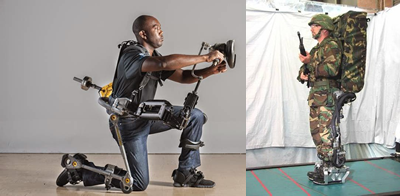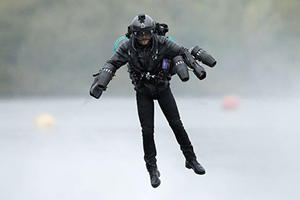What is wearable technology
Wearable technology includes all items of technology that can be worn and taken around with us including:
- Smart watches
- Fitness trackers
- Smart glasses
-
Exoskeletons
- Flying suits
- Prosthetics
Fitness trackers
Fitness trackers monitor things such as heart rate, steps, location, speed travelled.
These devices are gathering a large amount of data which both contributes to the need for large data centers which come with significant
environmental impacts and risks that data being accessed by hackers.
In 2018 it was revealed that basic searches of the fitness app Strava revealed the location of several secret military bases.
(Story)

Smart devices
Smart watches generally include all the functionality of a fitness tracker as well as additional functionality such as displaying notifications from a linked phone or controlling devices like linked headphones. They have the
same data issues as fitness trackers and also help contribute to the always on culture and are yet another device to add to the growing mountains of e-waste generated each year.
Many early attempts at smart glasses, such as Google Glass, have come and gone. Modern smart glasses include features like:
- A camera for taking photos and video
-
Speakers that work as headphones
- A microphone to interact with a built in virtual assistant
- Augmented reality features
They tend to be more used for work related tasks in specific industries more than
by the public.
Smart glasses that can record everyone around them represent a privacy issue for those around the user. If hacked, smart glasses could reveal large amounts of personal data including live GPS data.

Exoskeletons
Exoskeletons are wearable machines that can augment human capabilities. Few question the use of such suits in overcoming physical disabilities in a health setting where they are proving useful for both rehabilitation and
ongoing support. However, exoskeletons are extremely expensive raising questions about the equality of access to this type of technology. Should there be laws about their use?
Exoskeletons are also being used in manufacturing
and construction to support labourers with heavy lifting and physically demanding tasks. One ethical question raised is whether some employers may feel that they can expect workers to work longer hours if they won't get tired.
The development of exoskeletons for military purposes raises further ethical questions. What limits should be put on such machines? Do they risk desensitizing soldiers? What if these types of weapons were to fall into the hands
of criminals or terrorists?

Flying suit
British inventor Richard Browning created a one man jet powered flying suit. What started as a quirky looking toy has become a state of the art flying suit used for search and rescue in mountainous areas and by the navy for
boarding vessels at sea.

Prosthetics
Improvements in technology have allowed massive improvements to the quality of wearable prosthetics. New designs, such as those by the brilliant team at Unlimited Tomorrow, can work by sensing the signals from residual nerve
endings effectively allowing amputees to experience touch again. One ethical question for the future is what happens when the replacements become better than the original and people want to swap?
 << Previous: Effect of hackingNext: Effects of implants >>
<< Previous: Effect of hackingNext: Effects of implants >>